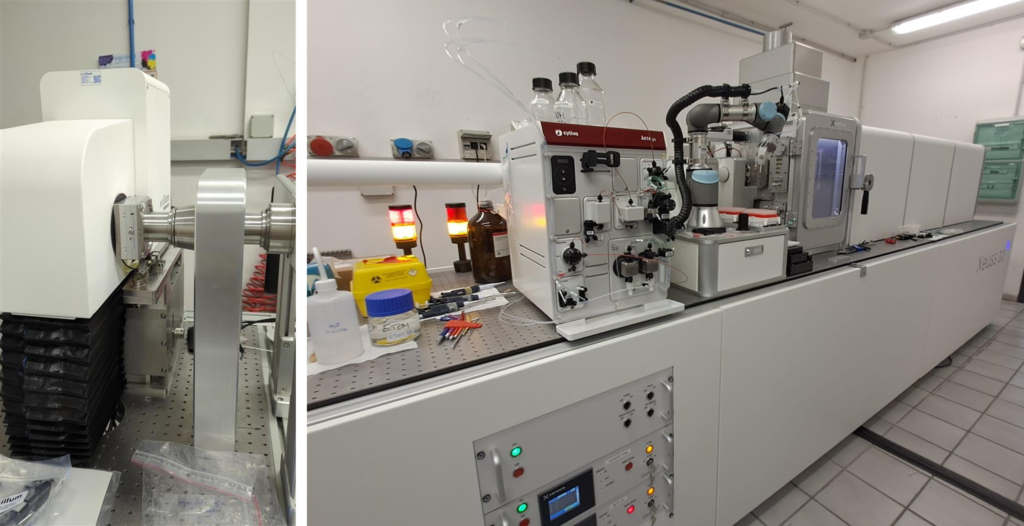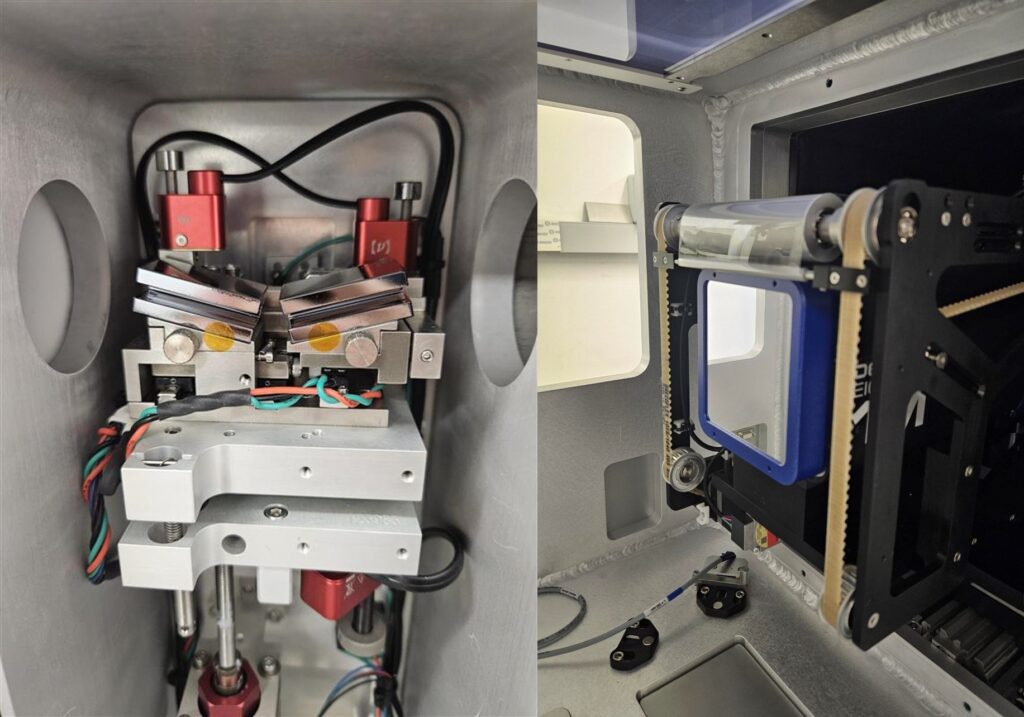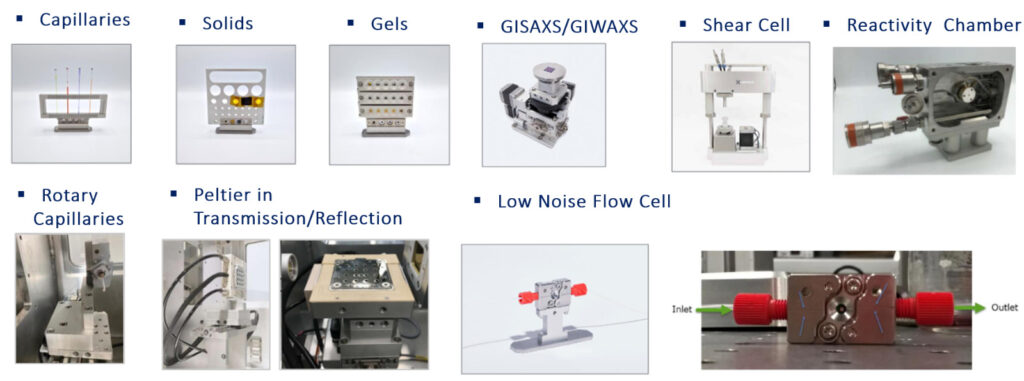BioSAXS
Institute of Crystallography (IC) - Bari
Description
BioSAXS is a technique used for structural studies of proteins in their native state. BioSAXS helps identify structural states and changes of biological macromolecules and relate these changes to their functions. In fact, many diseases are related to the misfolding of biological macromolecules. Structure changes can occur as a function of time, pH, ionic strength, and changes under various solution conditions.
BioSAXS is extremely functional also for studies of new pharmaceutical products. In the pharmaceutical field, administration systems consisting of nanocarriers that allow loading and transport of active ingredients are of great interest. These nanocarriers (micelles, vesicles, nanoemulsions, liposomes, cubosomes, polymer gel nanoparticles, nanostructured membranes), typically ranging in size from 10 to 500 nm, readily deliver the required amount of drugs to a specifically targeted part, where they have previously been translocated. It is essential to understand how much and in which part of the nanocarrier the drug has been loaded, since its efficacy and its fate depend on these values.
Very often BioSAXS data are collected at dedicated synchrotron light source beamlines, with access conditioned to the submission of competitive proposals and following a strict schedule (twice a year). Furthermore, with synchrotron light sources, there are at least two critical aspects to take into consideration: produce a sample or a series of samples of sufficient quality not to invalidate data collection (and therefore frustrate the experiment); handle samples with a certain degree of toxicity or specific criticality due to exposure in air.
Laboratory BioSAXS will allow to conduct preliminary studies, select the best samples to be analyzed (possibly) in synchrotron light laboratories. Furthermore, if equipped with Size Exclusion Cromathograhy (SEC-BioSAXS) and Ultra Small Angle Scattering (USAXS), it will be possible to study macromolecules, selected by size, up to 1 micron. Finally, a reactivity chamber will allow to manage samples in an inert or controlled atmosphere, avoiding exposure of the substances to oxygen during handling.
O.U. P.I.: Cinzia Giannini
People Involved: Davide Altamura, Liberato De Caro, Rocco Lassandro, Anna Daniela Malerba, Vincenzo Mangini, Erika Manicone, Francesco Scattarella, Teresa Sibillano, Dritan Siliqi
Application: Scattering technique aimed to determine size, shape (3D nanoscale structure) of proteins and nanosystems
Static studies on: solutions, thin films, nanocomposites, nanostructured surfaces, nanocrystal assemblies
Techniques: SAXS, WAXS, GISAXS, GIWAXS, uSAXS, SEC-SAXS, scanning SAXS/WAXS microscopy
Request access: here



- XEUSS3.0 system, HR model, equipped with a motorized dual source: Ga Excillum liquid jet source and Cu micro-source.
- Detector: Eiger 2R (1M), moving in vacuum from 42.5 mm to 1800 mm (sample-to-detector distance)
- Bonse-Hart 4-bounce Si(111) channel cut crystals monochromator and analyzer for uSAXS.
- Biocube system. Size-exclusion chromatography is coupled with SAXS (SEC-SAXS) using an AKTA goTM protein purification system
- 4-Axis motorized SWAXS module with EIGER2 R 500K: covering 1/8th of Ewald sphere in forward scattering. Achieved 2Theta range for scattering is from 7° to 90°. Rotation travel in perpendicular plane is 90° for in plane scattering or collection at high azimuth angles. Includes vertical translation to move the detector out of the chamber and control of detector inclination.
- Low Noise Flow Cell: Vacuum compatible low scattering flow cell for measurements on liquids. Manual injection with large volume as well as with volumes down to a few µL with a no dead volume solution from syringe to the cell.
- Xenocs Couette stage for shear SAXS: In air operated coaxial cylindric shear stage with external cylinder rotor (Couette type) and temperature control of stator. 1mm fixed gap between stator and internal surface of rotor. Rotational and oscillatory modes.
- Rotary capillary cell: Small goniometer head for capillary spinning for sample homogenisation and/or to reduce sedimentation. Supplied with accessories for capillary filling and goniometer head alignment.
- Advanced GISAXS module for thin films including Omega, Ry and Psi rotations.
- Multisample holder for powders and gels (also suitable for liquids)
- Multi-purpose X-Ray Temperature Stage (-20 to 150°C): Peltier type temperature stage for heating and cooling adapted for solids, gels, powders and capillaries. Compatible with GISAXS and Xenocs low noise flow cell Temperature range reduced to 4°C to 50°C for liquid samples.
